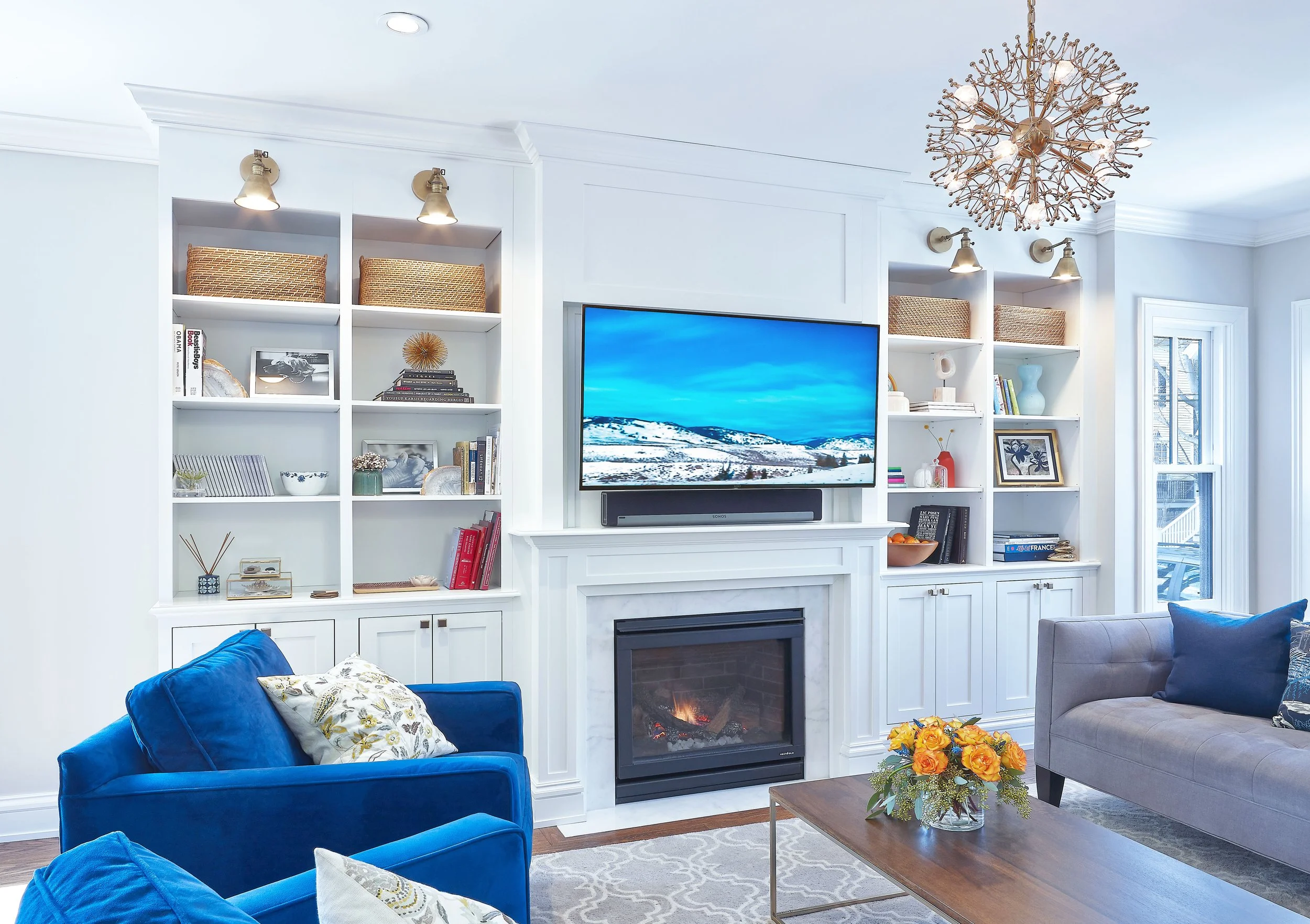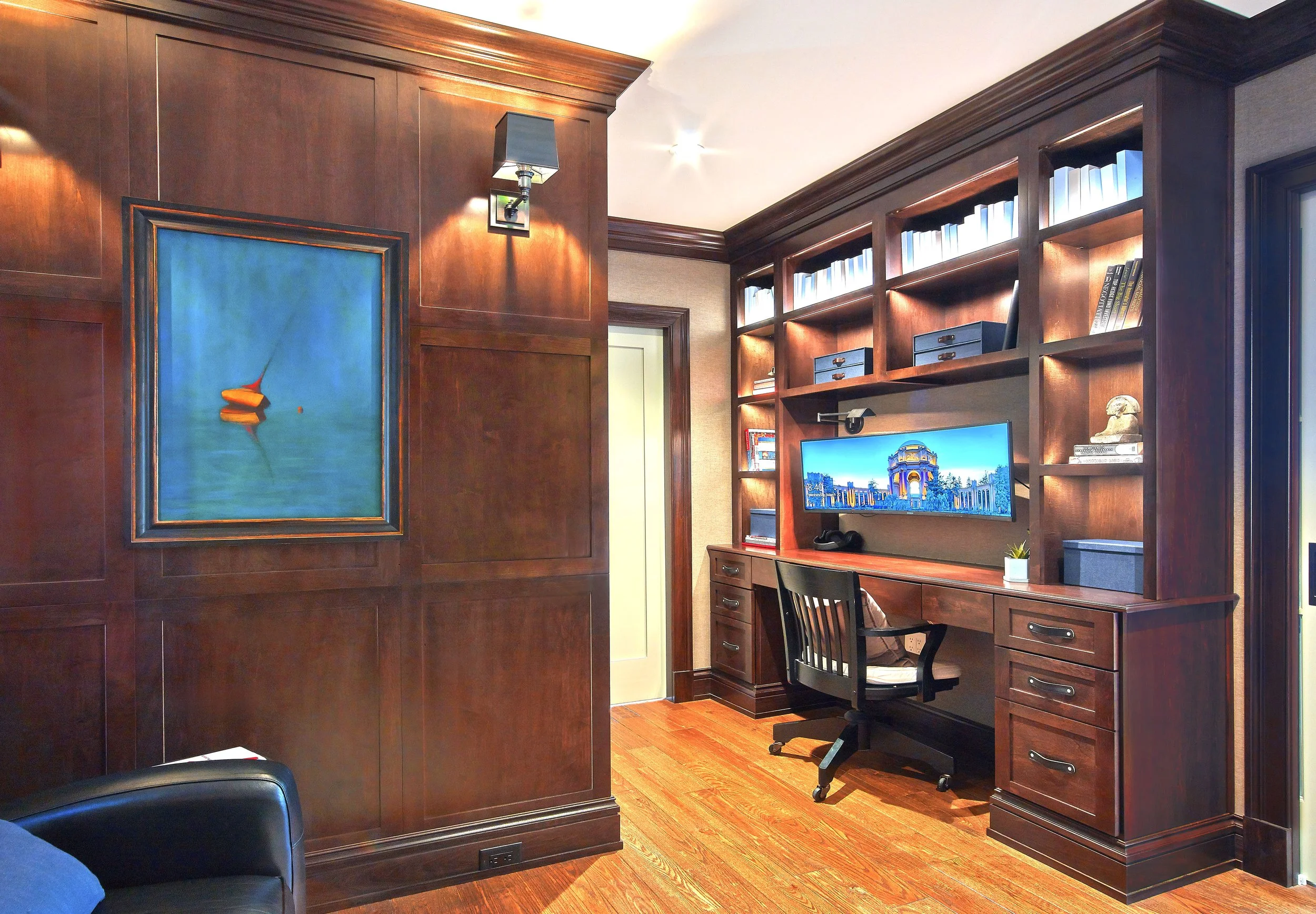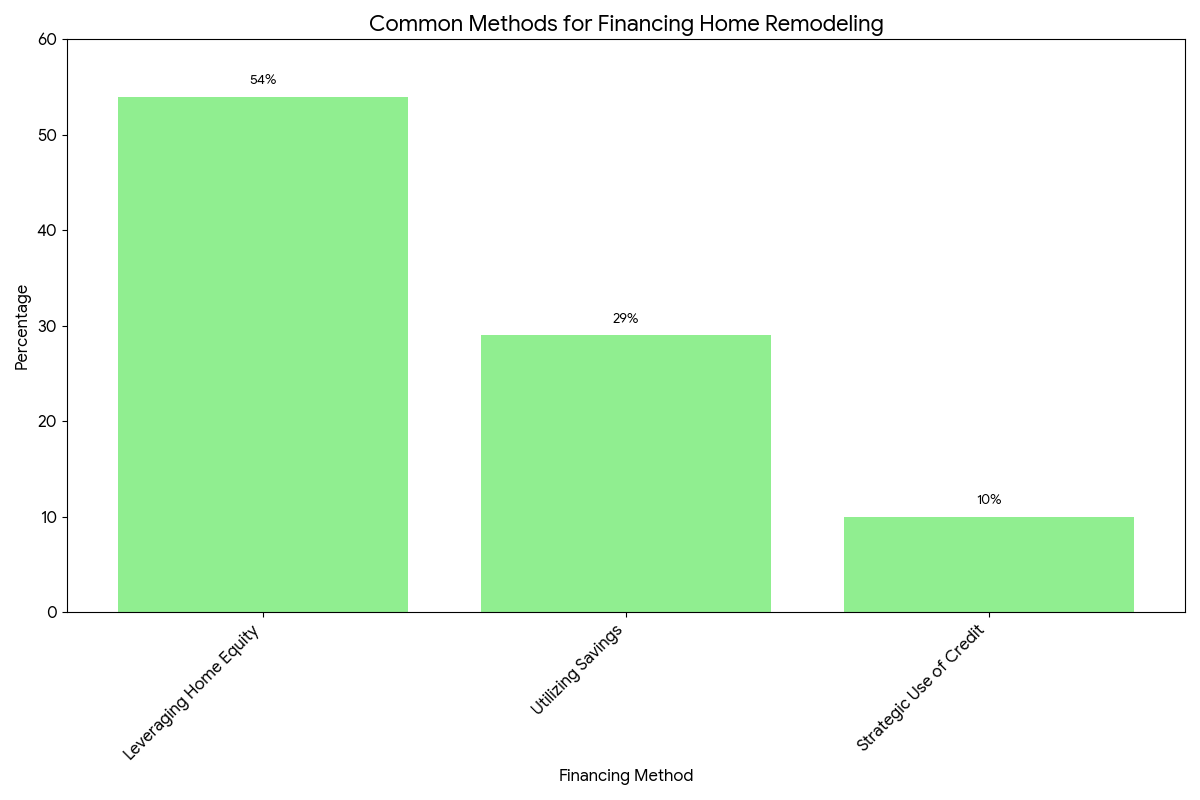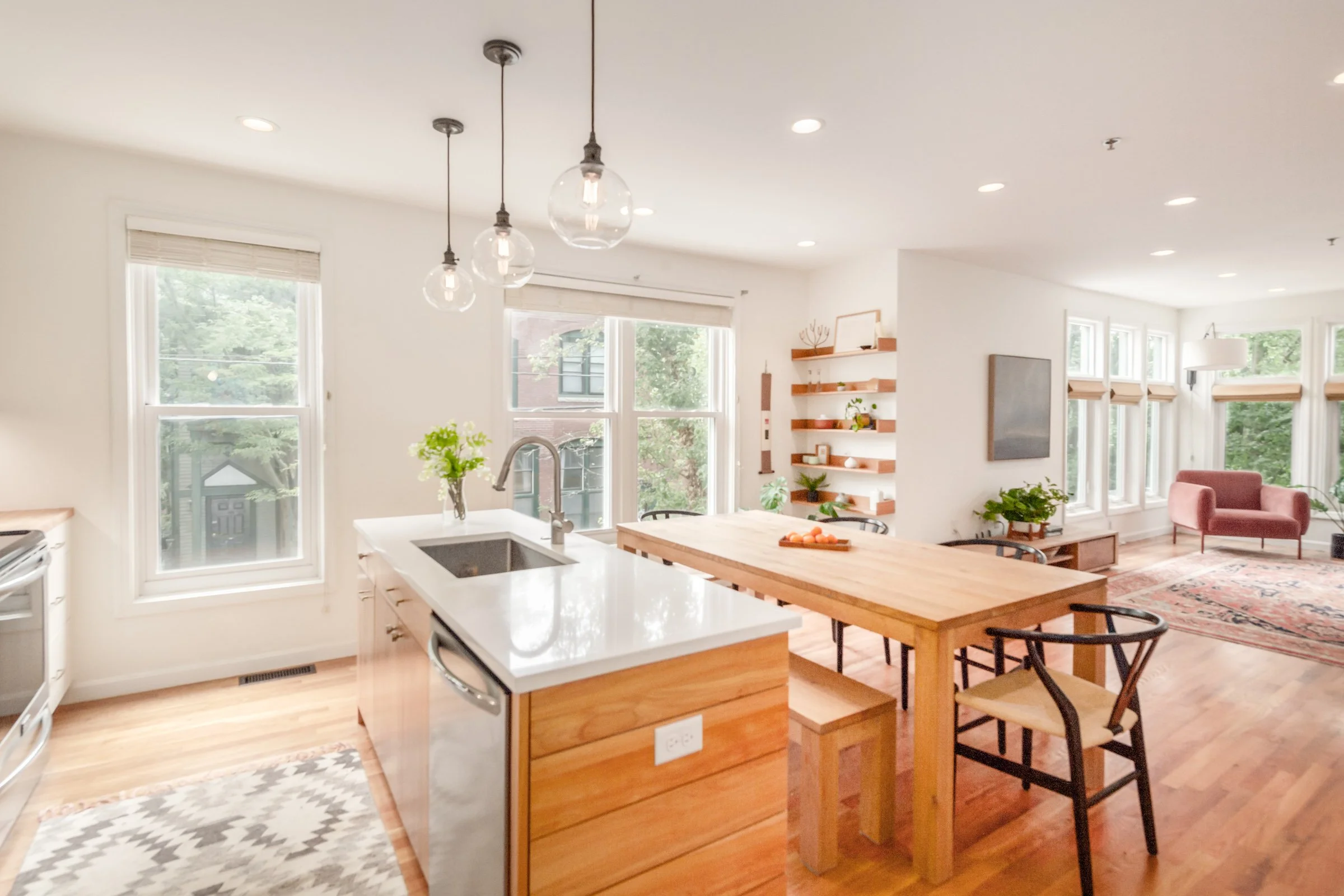Recently an acquaintance was describing to me his confusion about tiles for the four bathrooms he is remodeling. He explained that he had visited a tile showroom, leaving more overwhelmed than before he went in. Later he checked some bathroom idea books out of the library, which only proved that the options for bathroom design are seemingly endless.
Designing a bathroom might initially seem easy. It is usually one of the smallest rooms in the house. So, what makes designing a bathroom so difficult? Almost every professional in the remodeling industry is required to work on this tiny room to make it functional. After the existing room is demolished, you need to hire a carpenter, a plasterer, a plumber, an electrician, an HVAC specialist, a cabinet maker, a tile installer, a stone shop, and a painter.
This is also part of what makes bathroom remodeling so expensive. The other aspect of a bathroom remodel that makes it feel more expensive than expected is the cost of the fixtures and finishes. Every bathroom needs a toilet, a sink, a light and a ceiling fan. Many also have a shower and/or bathtub. Then there is the flooring and the wall protection (these are often tile).
There are five basic steps to designing a bathroom. It is best to make the general design decisions before beginning your bathroom remodel. If you have a general idea of what you want before even contacting a remodeling company your estimate will be most accurate.
Step 1. Get inspired.
Your first step may be to look at images of other bathrooms and copying or saving the ones that are appealing (and realistic for your space) to share with salespeople and designers. Tools for this are magazines, books, as well as online resources such as Pinterest and Houzz.com.
Or perhaps you were inspired by a friend’s recent remodel, or a hotel bathroom on a recent trip. If you can, obtain a photo or video to share with your contractor, architect or designer. As the saying goes “a picture speaks a thousand words.” These professionals are all visual and a picture can be helpful in communicating your expectations of the final product.
Step 2. Decide on the vanity and plumbing fixtures.
Once you are inspired you must be realistic about what will work in your space when it comes to your vanity and plumbing fixtures. A vanity with double sinks is great, but if you are designing a 5’ by 4’ powder room, or on a small budget there are better options. For small spaces consider wall-mounted and pedestal sinks and toilets. This saves space and can make smaller rooms feel more open.
Step 3. Choose tile and stone.
Researching materials before your appointments can streamline and speed up the selection process. You can choose either tile or stone first, but it is usually easier to bring tile samples to a stone shop than the reverse. At the tile shop, bring the inspiration (either paper or digital images) along with you to show the salesperson who are often trained designers. Be sure to consider the floor, the baseboard, the walls, the shower floor and walls if applicable. Will you also need bullnose or accent tile to finish all the edges where tile meets drywall? The designer or a tile shop employee can answer that question and point you toward tile options in your price range.
Step 4. Pick accessories and lighting.
Accessories and lighting are like the jewelry of the bathroom. More importantly, they make your bathroom functional. Usually, people pick one finish for all the accessories. If cost is an issue, chrome is generally the least expensive, and it never goes out of style. Below are the basics of what you will need, but the lists can and should be customized to each space.
Powder Room
Toilet paper holder
Hand towel ring
Overhead lighting
Vent Fan
Mirror or medicine cabinet
Wall sconce(s)
Main, Kids, Master or Guest Bathroom
Toilet paper holder
Hand towel ring
Towel bar(s) or Hooks
Robe Hook(s)
Overhead lighting
Vent Fan
Shower light
Mirror(s) or medicine cabinet(s)
Wall sconce(s)
Step 5. Finalize paint colors.
Find inspiration from the pictures of bathrooms you have selected. Go to the paint store to pick out chips. If possible, bring the chips into the actual space during daylight hours to compare alongside samples of the other finishes (tiles, stone, etc.) that you have selected. Once you narrow the options down to two or three, buy some samples at the paint store, and either apply them directly onto the wall, or paint poster board and bring into the space to compare. Some companies even offer large peel and stick samples for this exact purpose.
Remember. . .
If all else fails, and your budget allows, hire a designer. We recommend working with a designer and builder who have an established relationship for the smoothest process. If you are already working with a contractor, ask for a referral. They may even have a designer on staff. If you aren’t yet working with a contractor, hire a designer, and they will likely have contractors they have good relationships with to refer you to.










































